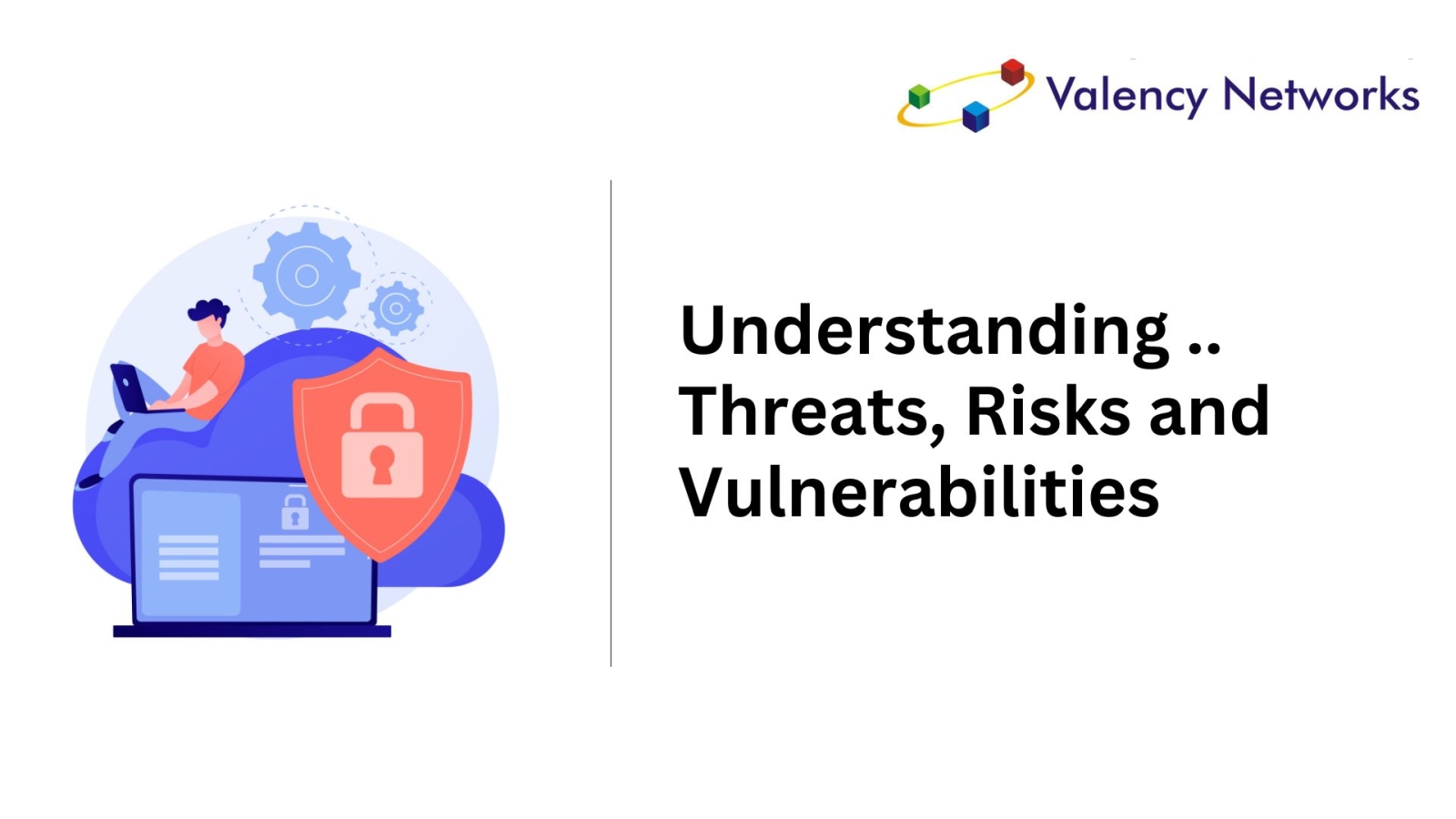- DORA Compliance – A Complete Guide by Valency Networks - 31/01/2025
- Is ICMP Timestamp Request Vulnerability worth considering - 31/12/2024
- Understanding Threat Intelligence in ISO 27001-2022 - 21/11/2024
Understanding Threats, Risks, and Vulnerabilities
Introduction:
In the complex world of cybersecurity, clarity on the distinctions between threats, risks, and vulnerabilities is crucial for organizations aiming to fortify their digital defenses. This article aims to elucidate these concepts and provide real-world examples to illustrate their significance in the context of cybersecurity.
- Threats: Unseen Menaces Lurking in the Digital Shadows
Threats in cybersecurity encompass potential dangers that can exploit vulnerabilities and compromise the integrity, confidentiality, or availability of digital assets. Threats can be intentional, such as malicious software like malware, or unintentional, such as system errors or misconfigurations.
Example: Malware Threat Imagine a scenario where an unsuspecting employee receives a phishing email containing malware. If the employee unknowingly opens a malicious attachment, the malware can infiltrate the organization’s network, posing a significant threat to data security and system functionality.
- Vulnerabilities: Weak Links in the Digital Armor
Vulnerabilities refer to weaknesses or flaws in a system’s design, implementation, or security controls that could be exploited by threats. These weaknesses can exist in software, hardware, configurations, or human factors, and they provide entry points for attackers to exploit.
Example: Unpatched Software Vulnerability Consider a situation where a company neglects to update its operating system with the latest security patches. This unpatched software becomes a vulnerability, offering threat actors an opportunity to exploit known weaknesses and gain unauthorized access to the system.
- Risks: The Confluence of Threats and Vulnerabilities
Risks in cybersecurity arise from the intersection of threats and vulnerabilities. It involves assessing the potential impact and likelihood of a threat exploiting a vulnerability, leading to tangible harm or loss for the organization. Risk management strategies aim to minimize these potential adverse effects.
Example: Data Breach Risk Suppose a company stores sensitive customer information on an inadequately protected server (vulnerability). In this scenario, the threat of a skilled hacker (threat) exploiting this vulnerability to gain unauthorized access and steal customer data poses a significant risk to the organization’s reputation, financial standing, and regulatory compliance.
Conclusion:
In the dynamic landscape of cybersecurity, recognizing the distinctions between threats, vulnerabilities, and risks is foundational for implementing effective security measures. By understanding how threats exploit vulnerabilities to create risks, organizations can strategically focus on fortifying their digital defenses. Real-world examples, such as malware-laden phishing emails and unpatched software vulnerabilities, underscore the practical implications of these concepts, emphasizing the importance of a holistic cybersecurity approach to safeguard digital assets and maintain organizational resilience.

